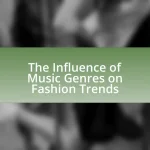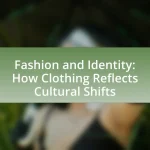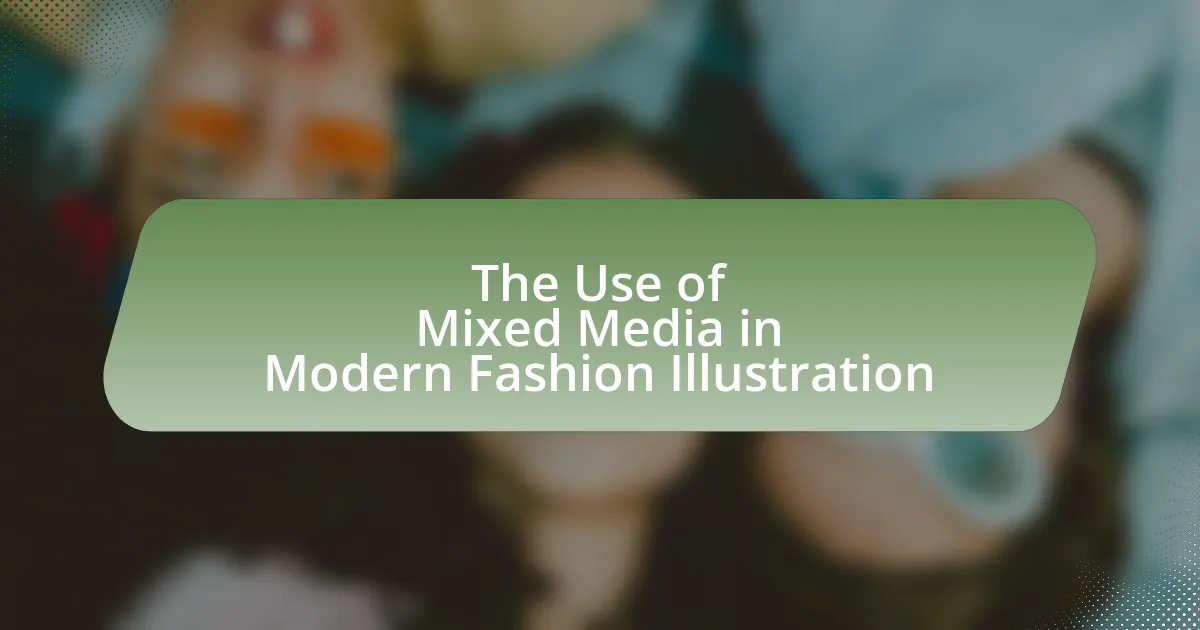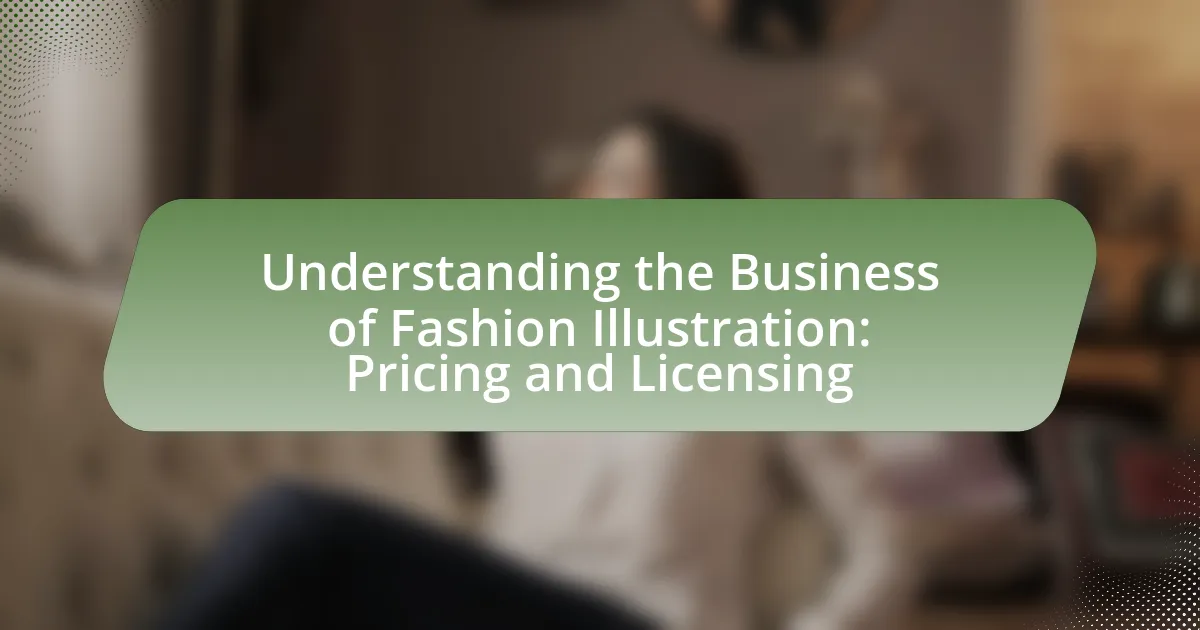Collaborating with fashion designers as an illustrator involves creating visual representations of clothing and accessories that reflect the designer’s vision. This article outlines the importance of effective communication, including clarity, active listening, and timely feedback, to ensure alignment between illustrators and designers. It explores various collaboration types, the roles illustrators play in the design process, and the benefits of such partnerships, including enhanced creativity and innovation. Additionally, the article addresses challenges illustrators may face, strategies to overcome them, and best practices for building successful relationships within the fashion industry.
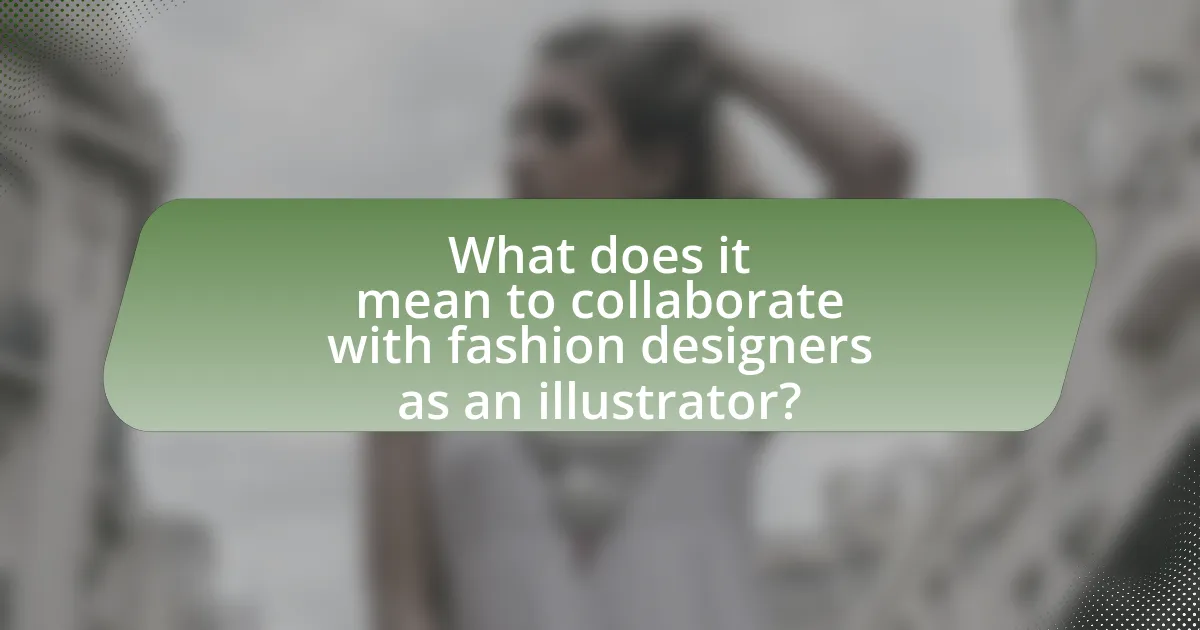
What does it mean to collaborate with fashion designers as an illustrator?
Collaborating with fashion designers as an illustrator means working together to create visual representations of clothing and accessories that align with the designer’s vision. This partnership involves translating design concepts into illustrations that can be used for marketing, presentations, or production. The illustrator must understand the designer’s aesthetic and technical requirements, ensuring that the illustrations accurately depict the intended style, fabric, and fit. Successful collaborations often lead to enhanced brand identity and effective communication of design ideas, as seen in projects where illustrators have contributed to major fashion campaigns, thereby increasing visibility and consumer engagement.
How can illustrators effectively communicate with fashion designers?
Illustrators can effectively communicate with fashion designers by utilizing clear visual language and maintaining open dialogue throughout the design process. This involves presenting sketches and concepts that accurately reflect the designer’s vision while also incorporating feedback to refine ideas. Regular meetings and collaborative tools, such as mood boards and digital platforms, facilitate ongoing discussions, ensuring that both parties align on aesthetics and functionality. Research indicates that effective communication in creative collaborations enhances project outcomes, as seen in studies highlighting the importance of iterative feedback loops in design processes.
What are the key elements of effective communication in this collaboration?
The key elements of effective communication in collaboration with fashion designers include clarity, active listening, and timely feedback. Clarity ensures that both illustrators and designers understand project goals, expectations, and design specifications, reducing the risk of misunderstandings. Active listening fosters a collaborative environment where ideas can be exchanged freely, allowing for creative input from both parties. Timely feedback is crucial for maintaining project momentum and ensuring that any necessary adjustments are made promptly, which is supported by research indicating that effective feedback loops enhance project outcomes in creative collaborations.
How can illustrators ensure they understand the designer’s vision?
Illustrators can ensure they understand the designer’s vision by engaging in thorough communication and actively seeking clarification on design concepts. This involves discussing the project’s goals, reviewing mood boards, and asking specific questions about color palettes, styles, and themes. Research indicates that effective collaboration in creative fields, such as fashion, significantly enhances the final output, as seen in studies highlighting the importance of clear dialogue in design processes. By prioritizing these communication strategies, illustrators can align their work closely with the designer’s intent, leading to a more cohesive and successful collaboration.
What are the different types of collaborations between illustrators and fashion designers?
Illustrators and fashion designers collaborate in various ways, including direct design partnerships, promotional campaigns, and product collaborations. In direct design partnerships, illustrators create unique artwork that informs the fashion designer’s collection, often resulting in limited-edition pieces that showcase both the illustrator’s style and the designer’s vision. Promotional campaigns involve illustrators producing visuals for marketing materials, lookbooks, or social media, enhancing the brand’s aesthetic and reach. Product collaborations occur when illustrators contribute their artwork to fashion items, such as clothing or accessories, creating a fusion of art and fashion that appeals to consumers. These collaborations are increasingly common, as they leverage the strengths of both parties to create innovative and marketable products.
What roles do illustrators play in the fashion design process?
Illustrators play a crucial role in the fashion design process by visually communicating concepts and ideas through sketches and illustrations. They translate the designer’s vision into visual representations, which serve as a foundation for the development of garments. This visual communication aids in the decision-making process, allowing designers to refine their ideas before production. Additionally, illustrators often collaborate with fashion designers to create mood boards and presentations that convey the overall aesthetic and direction of a collection, ensuring that the final designs align with the intended vision.
How do collaborations vary based on project scope and goals?
Collaborations vary significantly based on project scope and goals, as they dictate the level of involvement, resources, and expertise required from each participant. For instance, a large-scale fashion project with extensive marketing goals may necessitate a diverse team of illustrators, designers, and marketers, while a smaller, niche project might only require a single illustrator working closely with a designer. The complexity of the project scope influences the collaboration structure; larger projects often involve formal agreements and defined roles, whereas smaller projects may allow for more informal, flexible partnerships. Additionally, the specific goals, such as brand awareness or product development, further shape the collaboration dynamics, as they determine the focus areas and desired outcomes for all parties involved.
Why is collaboration important in the fashion industry?
Collaboration is important in the fashion industry because it fosters innovation and creativity, leading to unique designs and products. When fashion designers work with illustrators, they combine their expertise to create visually compelling collections that resonate with consumers. This partnership enhances the design process, allowing for diverse perspectives and ideas, which can result in more successful and marketable fashion lines. For instance, collaborations between established brands and emerging artists have historically led to groundbreaking collections that capture public interest and drive sales, demonstrating the tangible benefits of collaborative efforts in fashion.
What benefits do fashion designers gain from working with illustrators?
Fashion designers gain enhanced visual communication and creative collaboration by working with illustrators. This partnership allows designers to translate their concepts into compelling visual representations, making it easier to convey ideas to clients, manufacturers, and marketing teams. Illustrators bring unique artistic styles and perspectives, enriching the design process and fostering innovation. For instance, a study by the Fashion Institute of Technology highlights that effective visual communication can increase project approval rates by up to 30%, demonstrating the tangible benefits of this collaboration.
How does collaboration enhance the creative process for both parties?
Collaboration enhances the creative process for both parties by combining diverse perspectives and skills, leading to innovative solutions. When illustrators and fashion designers work together, they can share unique insights and techniques that enrich the creative output. For instance, a study published in the Journal of Creative Behavior found that collaborative teams often produce more original ideas compared to individuals working alone, as the interaction stimulates brainstorming and critical thinking. This synergy not only fosters creativity but also allows both parties to learn from each other, ultimately resulting in a more dynamic and effective creative process.
What challenges might illustrators face when collaborating with fashion designers?
Illustrators may face challenges such as differing creative visions when collaborating with fashion designers. This divergence can lead to conflicts over design elements, color palettes, and overall aesthetics, as each party may have distinct interpretations of the project goals. Additionally, communication barriers can arise due to varying terminologies and expectations within the fashion industry, which can complicate the collaboration process. Time constraints often present another challenge, as fashion designers typically work under tight deadlines, which may pressure illustrators to produce work quickly, potentially compromising quality. Furthermore, illustrators may struggle with the need to adapt their styles to align with the designer’s brand identity, which can limit their creative expression. These challenges highlight the complexities of collaboration in the fashion industry, necessitating clear communication and mutual understanding to achieve successful outcomes.
How can illustrators overcome communication barriers in collaborations?
Illustrators can overcome communication barriers in collaborations by establishing clear and consistent channels of communication. Utilizing tools such as collaborative platforms, regular check-ins, and visual references can enhance understanding and alignment between illustrators and fashion designers. Research indicates that effective communication strategies, including active listening and feedback loops, significantly improve collaborative outcomes in creative projects. For instance, a study published in the Journal of Creative Behavior highlights that teams with structured communication practices report higher satisfaction and productivity levels.
What strategies can illustrators use to manage differing creative visions?
Illustrators can manage differing creative visions by establishing clear communication and setting collaborative goals from the outset. This involves discussing each party’s expectations, preferences, and artistic styles to create a shared understanding. Regular feedback sessions can also help align visions throughout the project, allowing for adjustments based on input from both the illustrator and the fashion designer. Additionally, using visual references and mood boards can facilitate a common visual language, ensuring that both parties are on the same page regarding the project’s direction. These strategies are effective as they promote transparency and foster a cooperative environment, which is essential in creative collaborations.
How can illustrators build successful relationships with fashion designers?
Illustrators can build successful relationships with fashion designers by actively engaging in clear communication and understanding the designer’s vision. Establishing open lines of dialogue allows illustrators to align their artistic style with the designer’s brand identity, which is crucial for collaboration. Additionally, attending fashion events and networking within the industry can create opportunities for illustrators to connect with designers, fostering mutual respect and collaboration. Research indicates that effective collaboration in creative industries often leads to innovative outcomes, as seen in partnerships like those between renowned illustrators and high-fashion brands, which have resulted in successful campaigns and collections.
What networking strategies are effective for illustrators in the fashion industry?
Effective networking strategies for illustrators in the fashion industry include attending industry events, leveraging social media platforms, and collaborating with other creatives. Attending fashion shows, trade fairs, and art exhibitions allows illustrators to meet designers and industry professionals directly, fostering relationships that can lead to job opportunities. Utilizing social media, particularly platforms like Instagram and Pinterest, enables illustrators to showcase their work, connect with fashion influencers, and engage with potential clients. Collaborating with photographers, stylists, and other artists can also enhance visibility and create a broader network, as these partnerships often lead to shared projects and referrals.
How can illustrators showcase their work to attract fashion designers?
Illustrators can showcase their work to attract fashion designers by creating a professional portfolio that highlights their unique style and relevant projects. A well-curated portfolio should include high-quality images of illustrations that resonate with current fashion trends, demonstrating versatility and creativity. Additionally, utilizing social media platforms like Instagram and Pinterest allows illustrators to reach a broader audience, engage with fashion communities, and showcase their work in a visually appealing manner. Collaborating with fashion influencers or participating in fashion events can further enhance visibility and credibility within the industry.
What practical tips can illustrators follow to enhance their collaborations with fashion designers?
Illustrators can enhance their collaborations with fashion designers by establishing clear communication from the outset. This involves discussing project goals, timelines, and expectations to ensure both parties are aligned. Regular check-ins throughout the project can help address any concerns and keep the collaboration on track. Additionally, illustrators should familiarize themselves with the designer’s aesthetic and brand identity, which can lead to more cohesive and relevant illustrations. Utilizing mood boards or reference images can facilitate a shared vision. Finally, being open to feedback and willing to adapt designs based on the designer’s input fosters a collaborative spirit and strengthens the partnership.
How can illustrators prepare for initial meetings with fashion designers?
Illustrators can prepare for initial meetings with fashion designers by researching the designer’s previous work and understanding their aesthetic. This preparation allows illustrators to align their creative vision with the designer’s style, facilitating a more productive discussion. Additionally, illustrators should compile a portfolio showcasing relevant illustrations that reflect their skills and versatility, as this provides tangible evidence of their capabilities. Familiarizing themselves with current fashion trends and industry terminology also enhances communication and demonstrates professionalism.
What best practices should illustrators adopt during the collaboration process?
Illustrators should adopt clear communication, regular feedback, and mutual respect as best practices during the collaboration process. Clear communication ensures that both illustrators and fashion designers understand project goals, timelines, and expectations, which is crucial for successful outcomes. Regular feedback allows for adjustments and improvements throughout the project, fostering a collaborative environment that enhances creativity. Mutual respect between illustrators and designers builds a positive working relationship, encouraging open dialogue and innovative ideas. These practices are supported by studies indicating that effective communication and collaboration significantly improve project success rates in creative industries.

